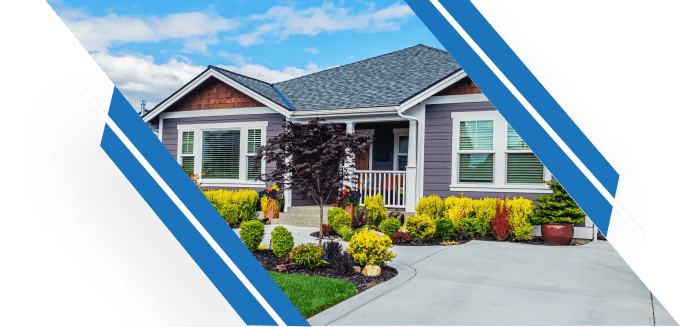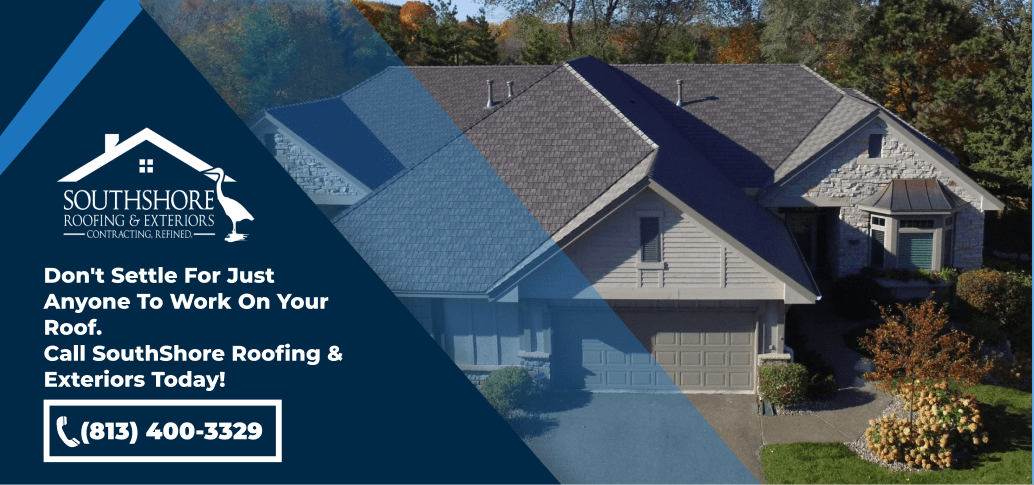Recent studies show that roofs are the most vulnerable part of your home during severe storms, with failure often leading to catastrophic structural damage. The good news? Proper roof preparation can reduce hurricane damage risk by up to 50%, making it one of the single most important investments in storm protection.
Tampa’s coastal location creates unique challenges for residential roofing systems. The combination of high humidity, salt content in the air, and the potential for intense wind patterns requires specialized preparation strategies beyond what might work in other regions. The flat topology of the Tampa Bay area also means homes receive less protection from natural barriers, exposing roofing systems to the full force of hurricane-strength winds.
Hurricane roof reinforcement goes beyond basic maintenance. It requires understanding how different roofing materials perform under extreme conditions and identifying potential weak points before they become major vulnerabilities. From securing loose materials to installing hurricane straps, each step in storm-proof home preparation builds a comprehensive defense system that protects the monetary investment you’ve made in your property.
Pre-Hurricane Season Roof Inspection Checklist
In order to protect your home from the worst of it, you need to inspect your home prior to the hurricane season. These inspections should be conducted at least 2 to 3 months before hurricane season begins, allowing ample time to address any problems that are found.
Start by examining your shingles for signs of damage. Look for curling, cracking, or missing shingles that could become dangerous projectiles during high winds. Inspect all flashing around chimneys, vents, and skylights, as these areas are particularly vulnerable to water intrusion during heavy rain. Check your gutters and downspouts as well in order to ensure they’re firmly attached and free from debris that could prevent proper drainage.
For those comfortable with DIY assessments, binoculars can help spot visible issues from ground level. Examine your attic interior for signs of leaks, water stains, or daylight showing through the roof. Check for loose or damaged soffit and fascia boards that could allow wind to get under the edge of the roof.
While homeowners can identify the more obvious problems, professional roof inspections provide a comprehensive evaluation that DIY methods simply can’t match. Tampa roofing contractors have the expertise to identify subtle warning signs and structural weaknesses before they turn into major failures. Professional inspectors can safely access steep or high roofs, evaluate attachment methods of roofing materials, and provide documentation that may be valuable for insurance purposes.
Hurricane-Resistant Roofing Materials for Florida Homes
If your roof needs an upgrade before the hurricane season, take the time to consider hurricane-resistant roofing materials that will benefit your home for years to come. Impact-resistant shingles, metal roofs, and concrete tiles each offer unique advantages for withstanding Florida’s severe weather conditions. Impact-resistant asphalt shingles are reinforced with fiberglass or polymer materials and typically carry Class 4 impact ratings, the highest available.
Metal roofs represent one of the most hurricane-resistant options available to Tampa homeowners. Quality metal roofing systems can withstand winds exceeding 140 mph and feature interlocking panels that prevent water from seeping into your home. The smooth surface also allows debris to slide off rather than becoming lodged and causing damage. Concrete and clay tiles, popular throughout Florida, offer excellent wind resistance when properly secured with hurricane-rated fastening systems.
Beyond immediate storm protection, hurricane-resistant materials deliver significant long-term value. Metal roofs typically last 40 to 70 years compared to standard asphalt shingles, which last 15 to 20 years. While premium hurricane-resistant materials have higher upfront costs, some insurance companies offer discounts for homes with qualified hurricane-resistant roofing materials. These savings, combined with reduced repair needs and longer replacement intervals, often make a hurricane-resistant roof the most economical choice over time for Tampa homeowners seeking peace of mind during the storm season.
Techniques for Reinforcing Existing Roofing Structures
Even if you’re not ready for a complete roof replacement, there are several effective ways to strengthen your existing roof against hurricane forces. These structural reinforcement techniques can significantly improve your Tampa home’s resistance to severe weather events while extending the lifespan of your current roofing system.
Installing hurricane straps is one of the most effective upgrades for existing roofs. These metal connectors create a continuous load path from your roof to your home’s foundation, dramatically reducing the risk of roof separation during high winds. For maximum protection, consider having a professional roofer install both exterior straps connecting roof trusses to wall plates and interior straps linking wall studs to the foundation.
Secondary water barriers provide critical protection when primary roofing materials fail. Self-adhering waterproof underlayment applied beneath your shingles creates a watertight seal that prevents rain intrusion even if shingles blow away. For gable roofs, proper end bracing is essential. Professional installation of horizontal and diagonal braces can prevent the catastrophic collapse that often occurs when these triangular wall sections fail during storms.
Reinforcing roof overhangs, particularly those exceeding 12 inches, greatly reduces the chance of uplift occurring. Adding blocking between rafters and securing soffit panels with enhanced fasteners prevents wind from entering your roofing system and creating dangerous internal pressure. Many Tampa roofing contractors offer comprehensive hurricane reinforcement services that address all these critical areas, providing layered protection against the region’s seasonal threats.
Securing Other Elements of Your Home’s Exterior Against Hurricane Damage
Protecting your home’s exterior against hurricane damage requires attention to details beyond just the main roofing structure. In Tampa, these exterior elements often represent the most vulnerable points where water intrusion and wind damage begin.
Start with your gutter system, which plays a crucial role in directing water away from your home. Clean gutters thoroughly before hurricane season and check that all sections are securely fastened to the fascia board. Install gutter straps every 2 to 3 feet to provide additional support against high winds and ensure downspouts extend at least 3 feet from your foundation to prevent water pooling that can compromise your home’s structural integrity.
Roof vents and skylights require special attention as they create natural breaks in your roofing system. Have a professional roofer check that all roof vents are properly sealed and consider upgrading to hurricane-rated models with enhanced wind resistance. For skylights, inspect the flashing and weatherstripping for deterioration and consider installing protective covers before major storms.
Your landscaping strategy also impacts roof protection. Trim trees within 15 feet of your home, removing dead branches and thinning canopies to reduce wind resistance. When choosing new landscaping, select low-growing, native species that can withstand high winds. Strategic placement of wind-resistant trees can actually create natural wind breakers that protect your Tampa home while minimizing potential debris that could damage your roofing system during severe weather events.
Emergency Roof Protection Measures When a Hurricane Is Imminent
When a hurricane warning is issued for Tampa, taking last-minute emergency measures can significantly reduce the risk of catastrophic roof damage. With just 24 to 48 hours before landfall, these temporary reinforcement techniques can make the difference between minor repairs and complete roof failure.
One effective emergency measure is applying hurricane tape to seal roof edges and prevent wind infiltration. This specialized tape creates a waterproof barrier along the perimeter of your roof, reducing the risk of shingle lift. As mentioned before, temporary roof straps can also be installed across the roof’s surface and secured to ground anchors, creating additional tension against wind uplift forces of up to 90 mph.
Plywood barriers for windows and glass doors indirectly protect your roof by preventing internal pressure buildup that can literally push your roof upward during a storm. Pre-cut, pre-drilled plywood sheets should be labeled and ready for quick installation when storms approach Tampa Bay.
Every Tampa homeowner should maintain an emergency tarping kit containing heavy-duty tarps, 2-inch lumber for securing edges, galvanized nails or screws, and safety equipment. Proper emergency tarping covers damaged areas with overlapping layers, with edges securely fastened to prevent water intrusion. The tarp should extend from the roof peak past the eave line, creating a complete watershed effect.
While these emergency measures aren’t permanent solutions, they provide critical forms of temporary protection during hurricane events. After the storm passes, contact a professional Tampa roofing contractor for a thorough assessment and permanent repairs to hurricane-damaged roofing systems.
After the Storm: Roof Assessment and Recovery Planning
Once a hurricane has passed, safely evaluating your roof damage becomes critical to preventing further deterioration. Before attempting any inspection, ensure the storm has completely cleared and wait until daylight hours for better visibility. From ground level, use binoculars to spot obvious damage like missing shingles, damaged flashing, or debris impact areas. Look for water stains on interior ceilings and walls that might indicate roof leaks that weren’t visible from outside.
If you need to get closer to your roof to check for damage, use extreme caution. Ensure ladders are placed on solid ground, wear non-slip footwear, and never inspect the roof alone. Remember that hurricane damage can compromise structural integrity, creating unseen hazards. When in doubt, contact a professional Tampa roofing contractor who has the proper safety equipment and experience to conduct thorough post-storm assessments.
If you’re thinking about filing an insurance claim, proper documentation is essential. Take clear photographs of all damage from multiple angles, noting the date and specific location of each photo. Create a detailed inventory listing all damaged areas and save receipts for any emergency repairs. Most insurance policies require seeing proof of “mitigation of damages,” meaning you must take reasonable steps to prevent further damage, such as covering breached areas with tarps.
When selecting a contractor for repairs, verify Florida state licensing, insurance coverage, and hurricane repair experience. Reputable Tampa roofers will provide written estimates, clear timelines, and warranty information. By approaching recovery systematically, you can restore your roof’s protective function while maximizing your insurance claim benefits.
Hurricane-Proof Your Roof with SouthShore Roofing & Exteriors
As hurricane season approaches, the importance of securing your home’s roof cannot be overstated. Luckily, SouthShore Roofing & Exteriors specializes in hurricane-resistant roofing solutions that protect your home from severe weather. Our team provides expert inspections to identify potential vulnerabilities in your roofing system, ensuring your home is prepared to withstand the challenges posed by Tampa’s unique weather patterns and coastal location.
Investing in the right roofing materials and structural reinforcement techniques can significantly reduce the risk of damage to your property. At SouthShore Roofing & Exteriors, we offer a variety of hurricane-resistant materials and advanced installation methods designed to enhance the durability and longevity of your roof.
Don’t wait until it’s too late. Call us today at (813) 400-3329 to schedule a comprehensive roof inspection and consultation. Let SouthShore Roofing & Exteriors help you safeguard your home against the next big storm.




